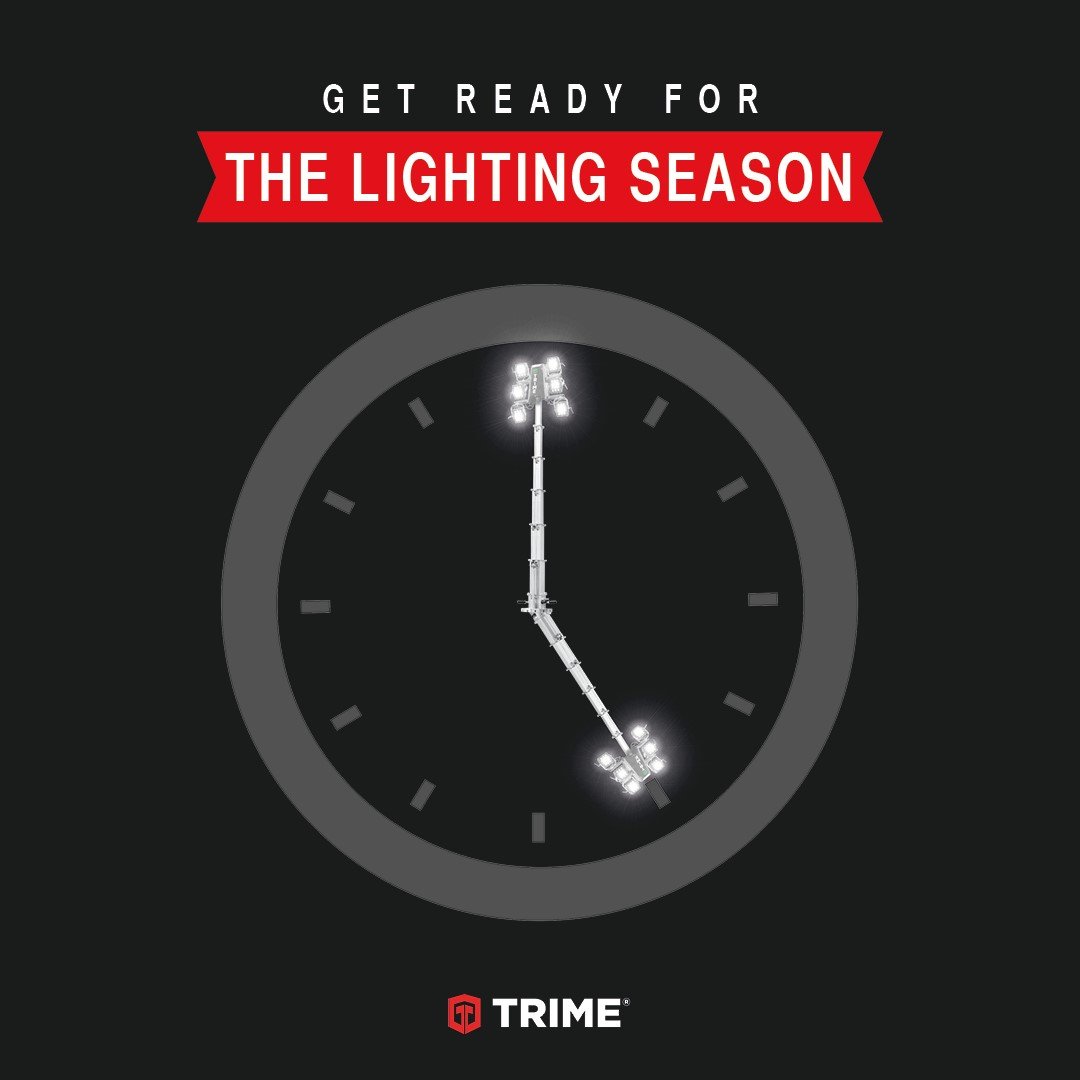
Why the Clocks Go Back & the Importance of Safety Lighting On-Site

It wont be long until the end of October in the UK! The time of year where the air gets crisp, and you realise you’ve forgotten where you stored your thicker jumpers. It’s also the time when the clocks go back an hour, giving us an extra sixty minutes of sleep (or an extra hour of scrolling through social media). But why do the clocks change, and what does this mean for those working outside on-site? Let’s explore daylight-saving time and the importance of safety lighting once darkness starts creeping in earlier.
Why do we have British Summer Time?
The idea of summer time or daylight saving time was mentioned in 1784 by Benjamin Franklin, the American inventor, scientist and statesman. However, it wasn't until 1907 that a serious proposal for daylight saving time was made in Britain by William Willett. Angry at the waste of daylight during summer mornings, he self-published a pamphlet called "The Waste of Daylight” which encouraged people to make the most of early morning sunlight.
In 1916, a year after Willett’s death and in the midst of the First World War, Germany became the first country to adopt daylight saving time to reduce fuel consumption and the UK quickly followed suit a few weeks later, along with many other nations involved in the First World War (1914-1918). Within a few years of its introduction, many countries across the world adopted Daylight Saving Time.
In the UK, the clocks go back one hour at 2:00 AM on the last Sunday in October, marking the end of British Summer Time (BST). This means that for a while, mornings are brighter, but evenings become darker sooner. So, while you’re enjoying that extra hour in bed, it’s worth remembering that shorter days are coming.
Why Safety Lighting On-Site Is More Important Than Ever
With the clocks going back, the sun decides to clock off early too, leaving those working on construction sites or in outdoor environments facing darker conditions sooner in the day. This shift can catch people off guard, especially if they’re used to working in daylight until later in the evening.
Here’s where safety lighting comes into play. Good lighting is crucial on any site, but it becomes even more vital as daylight hours dwindle. Adequate lighting ensures that workers can see what they’re doing, spot potential hazards, and move around safely. It’s not just about avoiding a trip or fall; it’s about creating an environment where everyone feels secure and can perform their tasks efficiently.
Why is this so important? Let’s break it down:
- Preventing Accidents: Reduced visibility in the early evenings can lead to accidents, especially when workers are tired after a long day. Proper safety lighting helps in identifying obstacles, equipment, and uneven surfaces, reducing the risk of trips, slips, and falls.
- Enhancing Productivity: Nobody works well in the dark—well, except maybe bats. With proper lighting, workers can maintain productivity without squinting or second-guessing their steps.
- Boosting Morale: Working in a well-lit environment is simply more pleasant. It helps workers feel safer and more comfortable, which in turn can boost morale. A happy worker is a productive worker, after all!
- Complying with Regulations: Let’s not forget that adequate site lighting is also a legal requirement. It’s not just about doing the right thing; it’s about staying on the right side of health and safety regulations.
Tips for Effective Safety Lighting
As the clocks go back and the evenings darken, here are a few tips to keep your site bright and safe:
- Assess Your Lighting Needs: Evaluate which areas of the site need extra lighting. Focus on high-traffic areas, entrances, exits, and places where heavy machinery is used.
- Use Mobile Lighting: Mobile Lighting Towers are a great solution for sites where work areas change frequently. They’re flexible, easy to move, and can be positioned to provide optimal lighting where needed.
- Check and Maintain Lights Regularly: Ensure that all safety lighting is checked regularly to make sure it’s in good working order and serviced since it’s last outing!
- Change to LED Lighting: LED lights are energy-efficient and provide bright, consistent illumination. They’re a great option for sites looking to reduce their carbon footprint while maintaining safety standards.
So, as the clocks go back and the UK gets ready for the cosy darkness of early evenings, remember that safety shouldn’t be left in the dark. Proper site lighting is essential not just for visibility, but for the overall well-being of everyone working in these conditions. After all, while an extra hour in bed is lovely, ensuring that everyone goes home safe at the end of the day is even better.
Happy (and safe) working in the darker days ahead!






